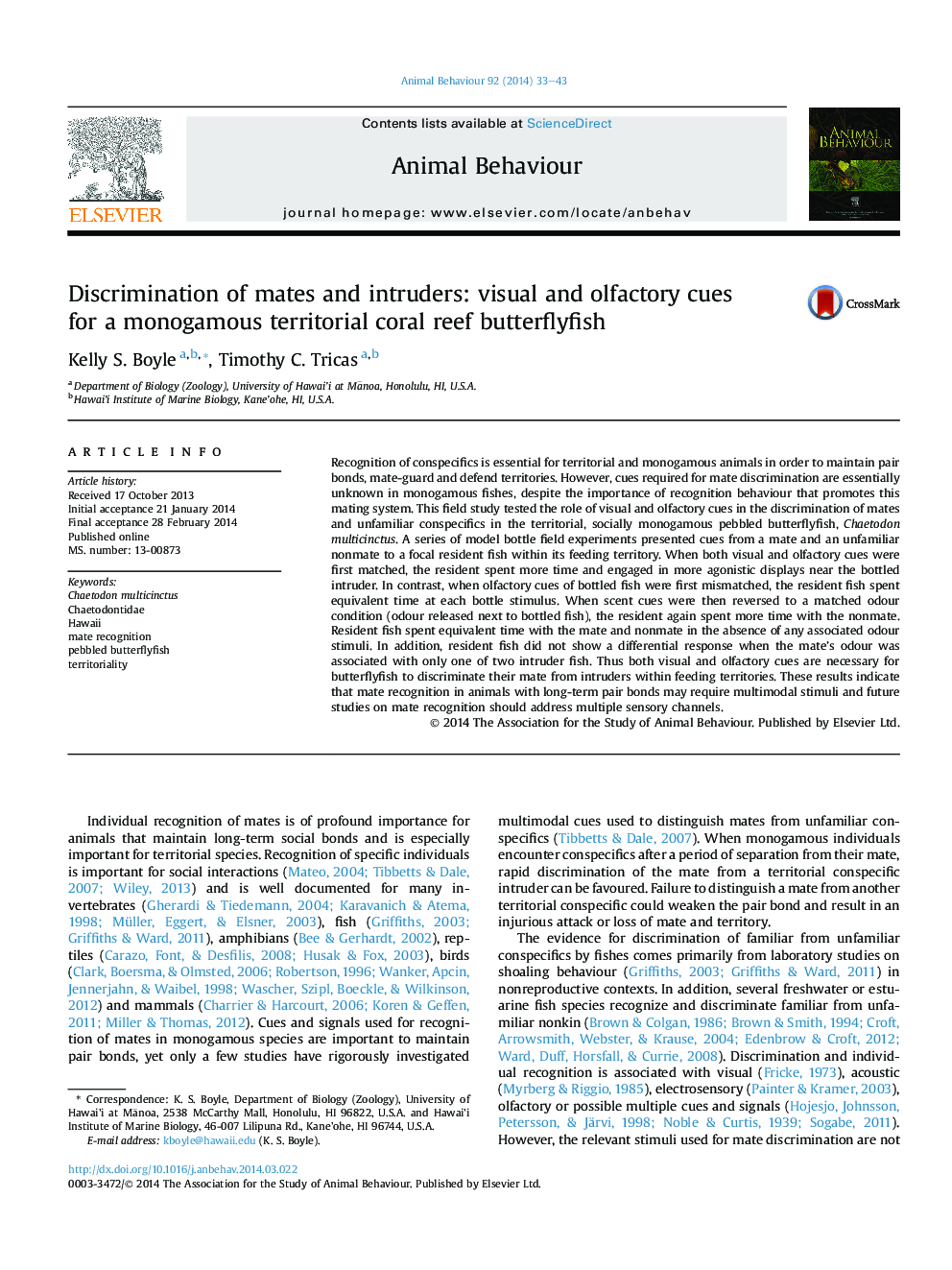| Article ID | Journal | Published Year | Pages | File Type |
|---|---|---|---|---|
| 8490513 | Animal Behaviour | 2014 | 11 Pages |
Abstract
Recognition of conspecifics is essential for territorial and monogamous animals in order to maintain pair bonds, mate-guard and defend territories. However, cues required for mate discrimination are essentially unknown in monogamous fishes, despite the importance of recognition behaviour that promotes this mating system. This field study tested the role of visual and olfactory cues in the discrimination of mates and unfamiliar conspecifics in the territorial, socially monogamous pebbled butterflyfish, Chaetodon multicinctus. A series of model bottle field experiments presented cues from a mate and an unfamiliar nonmate to a focal resident fish within its feeding territory. When both visual and olfactory cues were first matched, the resident spent more time and engaged in more agonistic displays near the bottled intruder. In contrast, when olfactory cues of bottled fish were first mismatched, the resident fish spent equivalent time at each bottle stimulus. When scent cues were then reversed to a matched odour condition (odour released next to bottled fish), the resident again spent more time with the nonmate. Resident fish spent equivalent time with the mate and nonmate in the absence of any associated odour stimuli. In addition, resident fish did not show a differential response when the mate's odour was associated with only one of two intruder fish. Thus both visual and olfactory cues are necessary for butterflyfish to discriminate their mate from intruders within feeding territories. These results indicate that mate recognition in animals with long-term pair bonds may require multimodal stimuli and future studies on mate recognition should address multiple sensory channels.
Related Topics
Life Sciences
Agricultural and Biological Sciences
Animal Science and Zoology
Authors
Kelly S. Boyle, Timothy C. Tricas,
